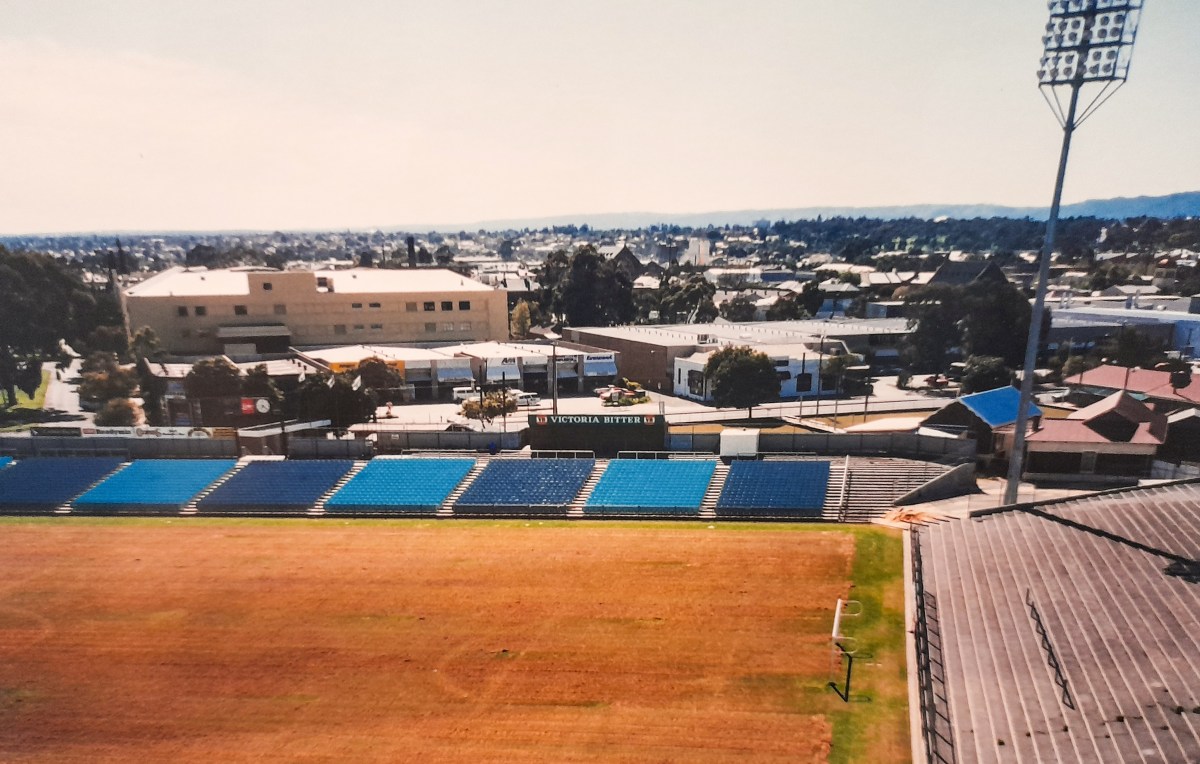Coopers Stadium, nestled in Hindmarsh, just minutes from central Adelaide, has a storied history as one of Australia’s premier football venues.
Over the years, the stadium has undergone multiple transformations, evolving from a modest local ground into a world-class facility. Today, it stands as a symbol of South Australia’s passion for football, boasting a brand-new pitch, modern safe-standing areas, and cutting-edge infrastructure, making it a venue that balances rich history with modern advancements.

The Early Years: From Cricket Ground to Football Hub
The site where Coopers Stadium now stands was originally home to Hindmarsh Oval, which hosted cricket and Australian Rules football as far back as the mid-1800s. However, it was in the 1960s that the transformation into a football-centric venue began. In 1960, the stadium was officially opened, marking a new era for the sport in South Australia. The local Soccer Association took over the lease, and Hindmarsh Oval was transformed into a rectangular pitch that would later become synonymous with football.

The Rise of Soccer in South Australia
Throughout the 1970s and 80s, the venue was home to iconic South Australian soccer clubs, including Adelaide City Zebras and West Adelaide Hellas, during the National Soccer League (NSL) era. In 1986, Hindmarsh Stadium hosted the first leg of the NSL Grand Final, a landmark moment for soccer in Adelaide. These years cemented the stadium’s reputation as a central hub for the sport, hosting not only club matches but also Socceroos internationals, with local heroes like Robert Zabica and the Vidmar brothers gracing the pitch.
Olympic Spotlight and Major Upgrades
The stadium’s first major redevelopment came ahead of the 2000 Sydney Olympics, when it was chosen as one of the venues for the men’s soccer tournament. This transformation saw Hindmarsh Stadium’s capacity increased, seating expanded, and new lighting installed, bringing it up to international standards.

Temporary seating brought the stadium’s capacity to 20,000 for Olympic matches, and it hosted memorable clashes, including a 1-1 draw between Italy and Nigeria.

This redevelopment marked a turning point, elevating Hindmarsh Stadium into a modern football facility while maintaining its intimate atmosphere that fans cherished.
Coopers Stadium and the Birth of Adelaide United
In 2003, Adelaide United Football Club was formed, and Hindmarsh Stadium became its home. Since then, the stadium has witnessed many memorable moments, including packed crowds for AFC Champions League matches and FFA Cup triumphs. The stadium’s record attendance of 17,000 was set during the 2008 AFC Champions League Final, where Adelaide United faced Gamba Osaka, underscoring its significance in Australian football.

In 2013, the stadium was renamed Coopers Stadium, reflecting its partnership with the local brewery Coopers, and a new chapter began in its storied history. The stadium, of course, has been the stage for some of the biggest moments in local football, hosting RAANPLSA, Women’s NPL, and State League Grand Finals, as well as major events from SAASL.
The 2020s: Redevelopment and Modernisation
As football’s popularity continued to grow, Coopers Stadium underwent a $53.5 million upgrade starting in 2021, following investment by the State Government and Adelaide Venue Management, proud operators of Coopers Stadium. Additional funding also aided the redevelopment of the stadium’s Eastern Stand with the addition of a 2200 square metre roof providing improved protection from the elements, along with new change rooms, seating, improved facilities, and an overhaul of the playing surface to ensure the venue could host top-tier matches for years to come. The crowning jewel of this upgrade was the installation of a brand-new pitch featuring Santa Ana Sports Couch grass, a drought-resistant variety ideal for the hot Adelaide summers. Paired with an advanced irrigation system, this new turf ensures a pristine playing surface throughout the season.
More recently, fans have been treated to an enhanced matchday experience with the introduction of a dedicated ‘safe standing’ active supporters’ area. The safe-standing section reflects a growing trend in football globally, providing a more dynamic and engaging experience for fans while maintaining the highest safety standards. This addition has revitalised matchday atmospheres, bringing supporters closer to the action and heightening the sense of community within the stadium. In addition, new LED screens have been added throughout the precinct to further build vibrancy and fan engagement.

A Stadium For The Future
Coopers Stadium today stands as a symbol of both tradition and innovation. Its journey from a humble cricket ground to a modern, world-class venue showcases the enduring passion for football in South Australia. As the home of Adelaide United, it continues to be a fortress for local fans and a beacon for international events, as evidenced by its role in hosting five FIFA Women’s World Cup 2023™ games.

With its state-of-the-art pitch, safe standing zones, and intimate atmosphere, Coopers Stadium remains the heart of South Australian football—honouring its past while embracing the future.




